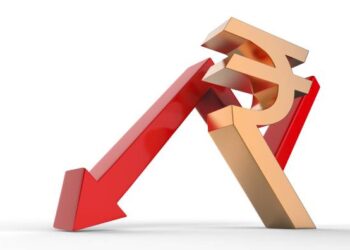The rupee fell 26 paise to 82.49 (provisional) against the US dollar on Tuesday, owing to a stronger dollar, negative sentiment in the domestic equity market, and continued outflows of foreign funds.
The domestic unit opened lower at 82.27 against the dollar on the interbank foreign exchange and traded between 82.24 and 82.50 intraday. It eventually settled at 82.49 (provisional) against the US dollar.
The Indian rupee has fallen for the second day in a row. The rupee closed at 82.23 against the US dollar on Monday.
The fall in the rupee, according to Jateen Trivedi, VP Research Analyst at LKP Securities, is due to spillover fears following the failure of Silicon Valley Bank in the United States.
“The Rupee fall continued as the Silicon Valley Bank in the US has spread concerns over the spillover fears after its collapse and in line with Asian peers. Rupee this time, fell below 82.48 levels which were last seen on 3rd March 23.
“The ripple effect can keep the forex market into continued volatile sessions,” he said and projected the range for rupee between 82.20-82.75 in further trades.
Meanwhile, the dollar index, which measures the strength of the US currency against a basket of six currencies, increased 0.26 percent to 103.86.
Brent crude futures fell 2.30 percent to USD 78.91 per barrel, the global oil benchmark.
The 30-share BSE Sensex fell 337.66 points, or 0.58 percent, to 57,900.19 points, while the broader NSE Nifty fell 111.00 points, or 0.65 percent, to 17,043.30 points.
According to exchange data, foreign institutional investors (FIIs) were net sellers in the capital markets on Monday, offloading shares worth Rs 1,546.86 crore.
The failure of two US banks, Silicon Valley Bank and Signature Bank, has raised concerns about the financial system’s health, even as American regulators take steps to control the situation.
In light of this, some analysts believe the US Federal Reserve will opt for a slower rate hike even if inflation remains high.
Domestically, wholesale price-based inflation fell to a two-year low of 3.85 percent in January, owing to lower prices for manufactured goods, fuel, and electricity, even though food prices remained high.
According to government data released on Tuesday, the rate of wholesale price index (WPI) based inflation has fallen for the ninth consecutive month.
Source:BS








 Finance
Finance







